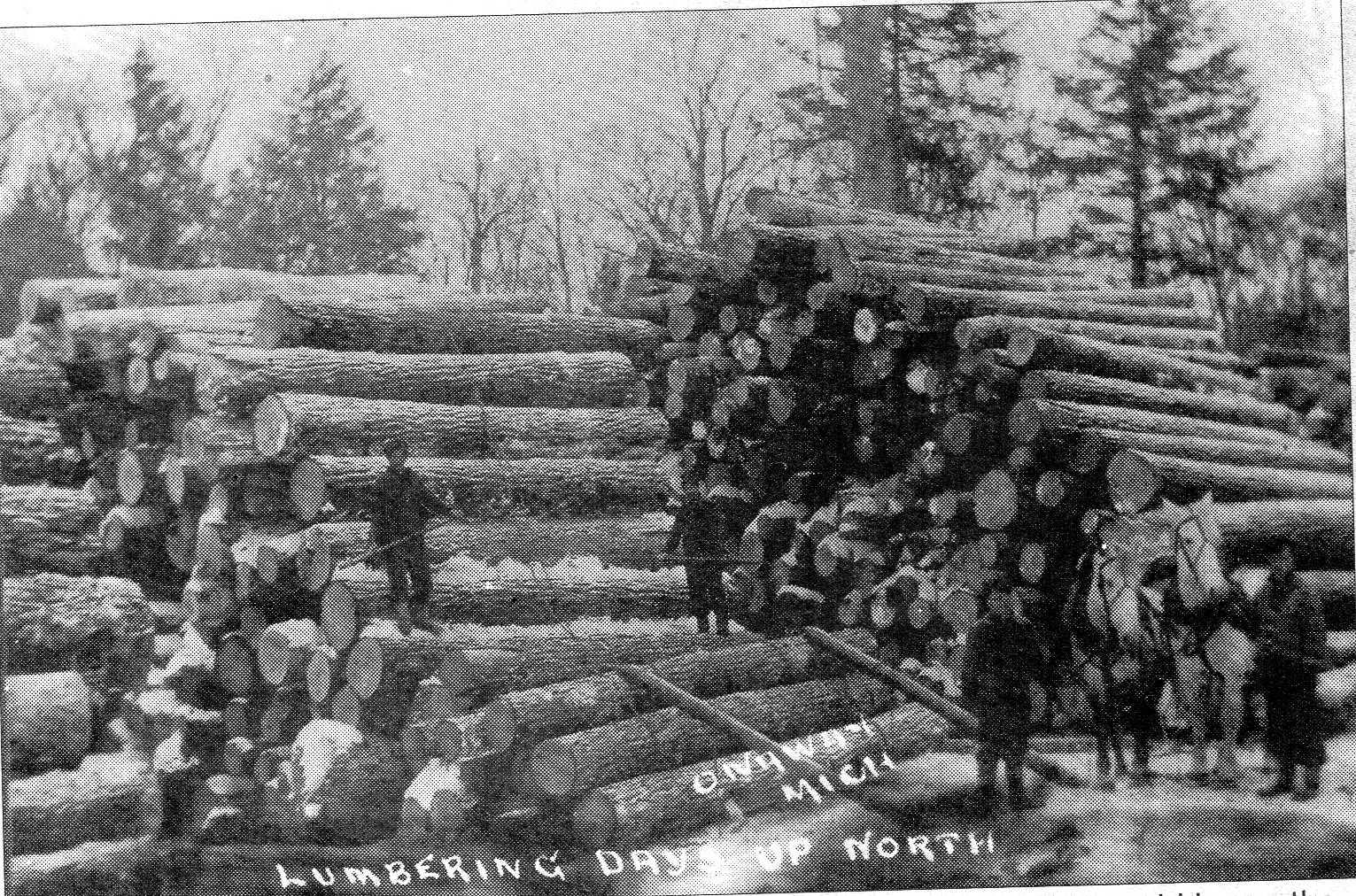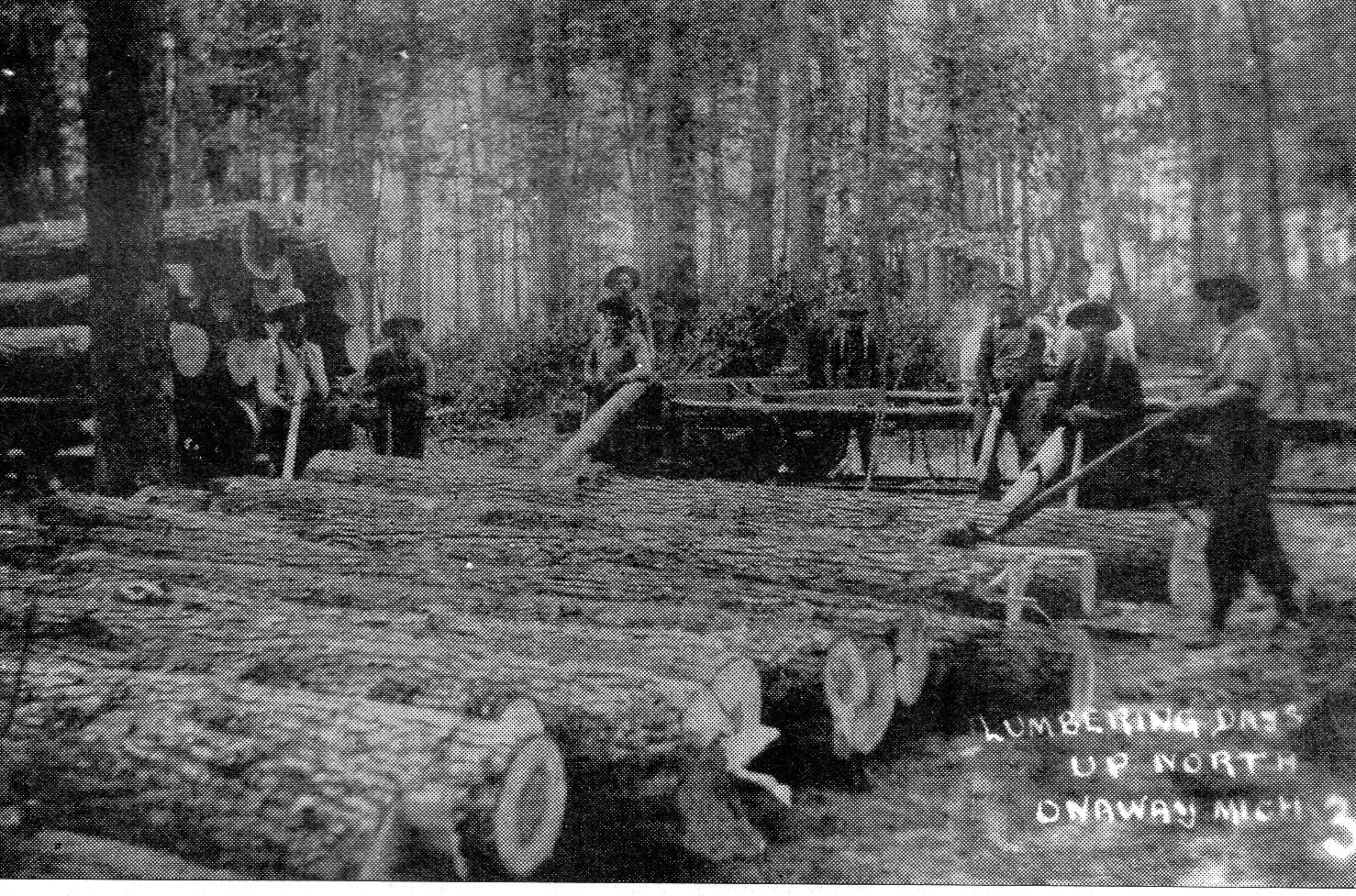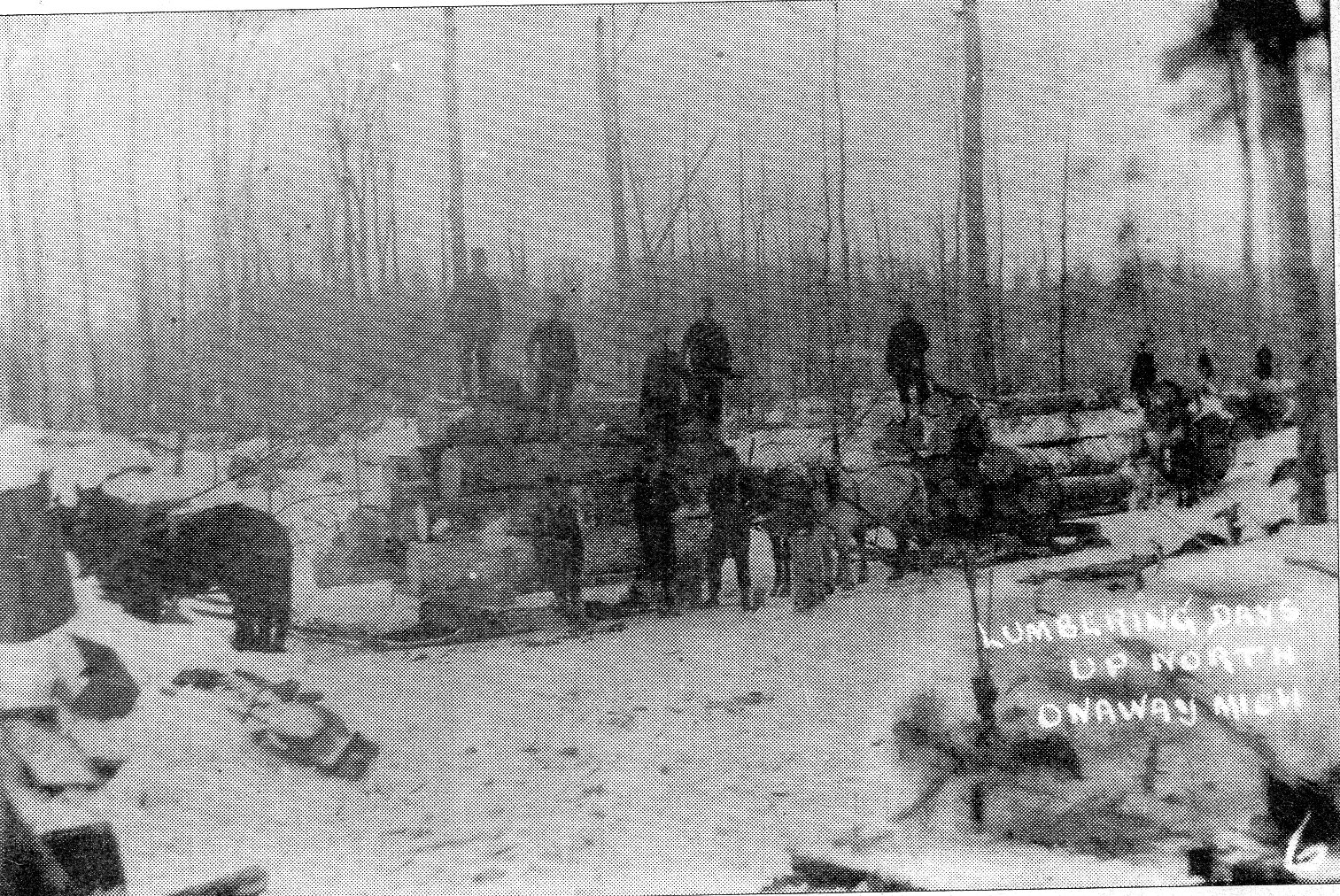
Submitted by Nute Chapman, written by Clifford Knowles
From Onaway Outlook May 10, 2013

 |
Submitted by Nute Chapman, written by Clifford Knowles From Onaway Outlook May 10, 2013 |
 |
CAPTION #1: THESE FOUR PILES of logs could be decked near a railroad or a river could be on the backside.
Note the long decking line going over the pile. Horse power would be used to get the logs to the top.
 CAPTION #2: LOADING LOGS onto a flatcar. Note the skids and the cross chains hooked to the team.
CAPTION #2: LOADING LOGS onto a flatcar. Note the skids and the cross chains hooked to the team.
 CAPTION #3: FIVE SLEIGH LOADS of logs coming into the railroad. Note the removable seats on top of each
load of logs, where the teamster sat.
CAPTION #3: FIVE SLEIGH LOADS of logs coming into the railroad. Note the removable seats on top of each
load of logs, where the teamster sat.
 The following two-part story was written by Clifford Knowles, who was vacationing in the Onaway
and Tower area sometime before 1926. The pictures are from Dad's collection and my own that I have
bought on line.
The following two-part story was written by Clifford Knowles, who was vacationing in the Onaway
and Tower area sometime before 1926. The pictures are from Dad's collection and my own that I have
bought on line.
It was my good fortune recently to spend a day with the lumberjacks in their camp, in the first tract of
timber, with one exception, in northern Michigan south of the Mackinac Straits. This camp is maintained by
the Lobdell-Emery Company Onaway, Michigan, manufacturers of wood rims of various descriptions. A "Dinkey
Line" connects this factory to the camp, and the logs are hauled in daily over the tracks.
Receiving the permission of Superintendent Charles Kenrick, I mounted the cab of the worm gear-driven
engine pulling six empty flat cars, and made the acquaintance of the train crew, the engineer and fireman.
The former, Bill Comfort, has held the throttle of engines on the New York Central Lines for several
years, hauled ammunition trains in France and Russia and proved an interesting narrator. His buddy,
Ray Heffner, gave us a thrill when he walked on the logs on the swaying cars during our return
journey from the camp.
Old No. 2 wheezed and puffed and the wheels clicked the rails as Bill gradually opened the throttle, and I
was on my way to my first glimpse of a lumber camp. We averaged about 12 miles an hour over twisted
rails and numerous curves, through a landscape dotted with countless stumps and dense second-growth
timbers, the mute reminders of man's destructiveness.
Arriving within view of the camp, the train crew switched the "flats" to a siding and continued
deeper into the woods to the point where the loggers had six cars loaded for transit.
The logs are hoisted onto the cars by a steam derrick through a medium of a gigantic pair of hooks,
which operate on the principle of ice tongs, a hook jabbed into each end of the log. As we watched this
operation a teamster drove up with a load of logs, and a typical lumberjack he seemed to be, a product
of the forests we concluded when lumber camps were situated far beyond the frontiers. He willingly posed
for a picture, and then nimbly jumped to the ground, belying his 60-odd years of life. Denny McDouwd
is not an appropriate subject to illustrate the merits of a safety razor or the qualities of a shaving cream,
for only Denny's eyes and nose can be seen through the maze of gray whiskers.
The logs are unloaded in a few minutes by means of cant hooks or levers in the hands of experienced loggers,
and silent Denny gathered up the reins and drove back into the woods, followed by the writer; in less than
10 minutes we came upon a gang of sawyers and watched them bring to earth the giants of the forest. The
fallen trees are left to the skill of the trimmers and in a surprisingly short space of time the logs are
produced, then "snaked" out to the clearing, where the wagons are loaded by means of a chain loader over
a wood frame, which reminds one of a mammoth escalator.
Here we witness the strength of man, which staggered the imagination of a city biped. Theo Whaley is the
strongest lumberjack in this region; he can toss a 30-foot steel rail with an ease that show but little
exertion. A common feat for Whale to perform is to pick up and walk off with a log that requires the
combined efforts of three lumberjacks to lift. Last winter he fell a victim of pneumonia and continued
working until the fever made him wild. It required eight men to strap Theo to a sled and take him to
Onaway for medical attention.
To be continued next week.
-From The Onaway Outlook, May 10, 2013, p. 9.
Retyped by J. Anderson.